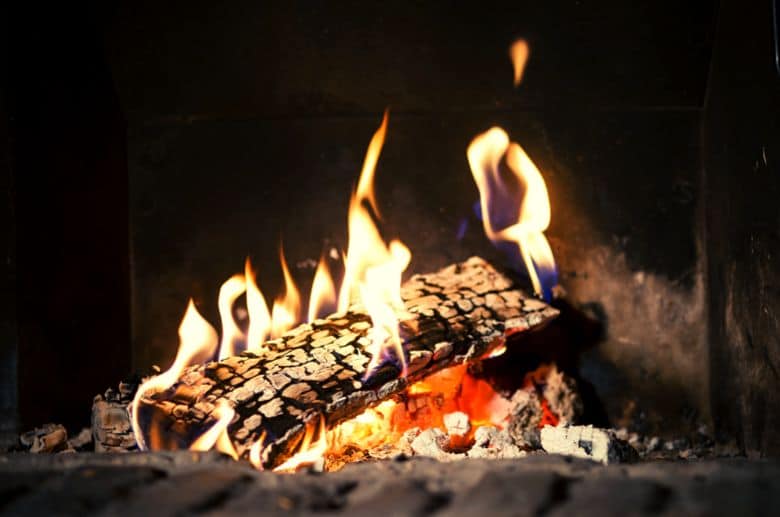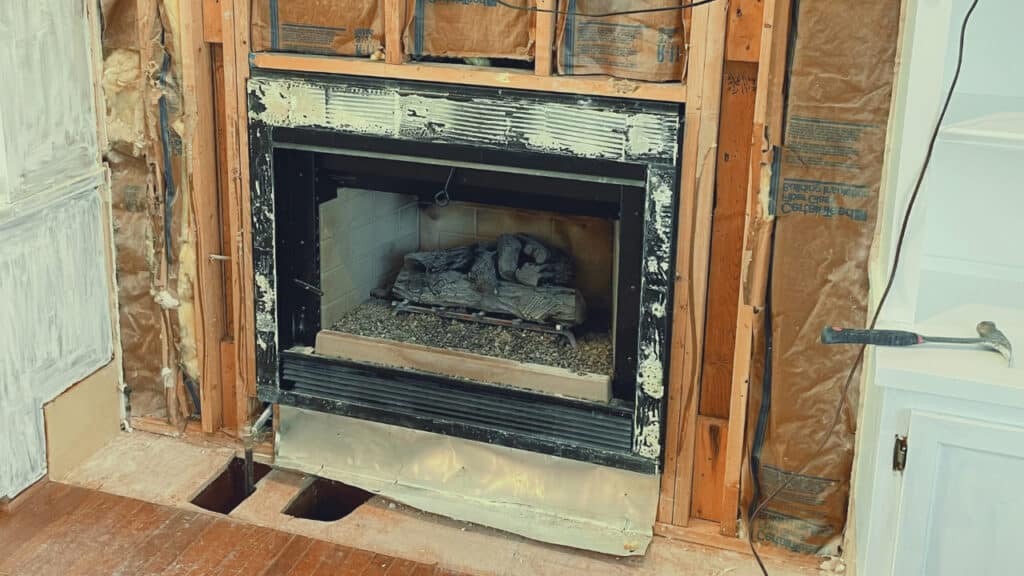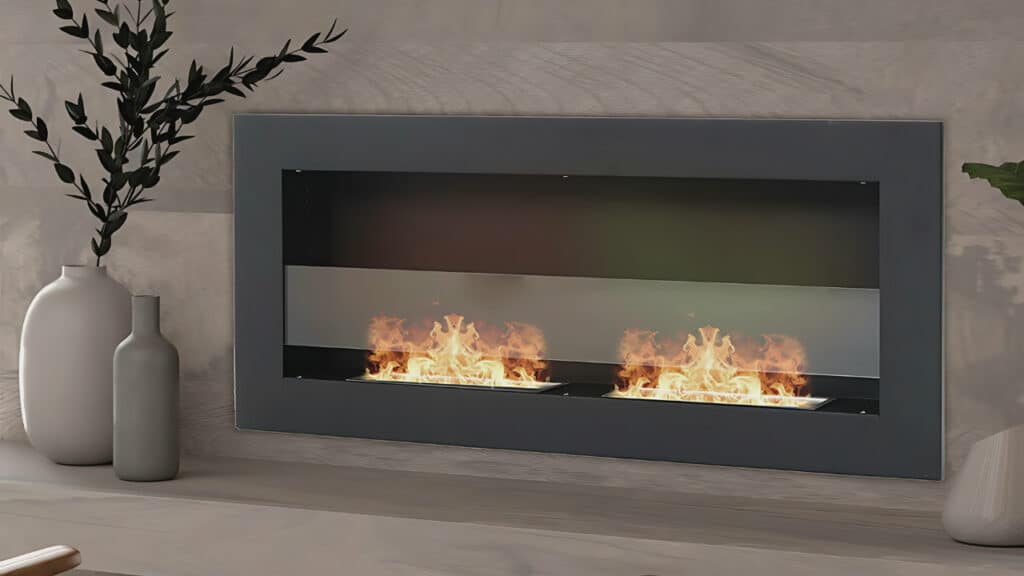One of the most frustrating things when trying to enjoy a cozy fire on a cold night is when the firewood won’t burn.
There are several reasons why this might happen, and understanding the causes can help you avoid future frustration.
The three things required for a fire to keep burning are heat, oxygen and a fuel source (firewood).
In this guide, we will discuss reasons why your fire won’t burn as well as provide tips on how to maintain a fire.
Why my firewood won’t catch fire?
Here are the main reasons firewood won’t burn:
1. Wrong Wood Type
One of the biggest mistakes you can make when starting a fire is to use green wood.
Green wood is freshly cut wood and it typically contains a lot of moisture (up to 50%). So, when you start a fire, the moisture will quickly extinguish it.
Another disadvantage of using green wood to start and maintain a fire is that it produces a lot of smoke which suffocates the fire. It also leads to the build-up of creosote in your chimney over time.
The best wood type to start and keep a fire burning is fully seasoned wood. This type of firewood has been dried for an extended period and only contains negligible amounts of moisture.
It burns cleanly and is best if you are trying to reduce combustion byproducts such as creosote. Seasoned wood is characterized by darker color (compared to green wood) and cracks at the ends.
Aside from fully seasoned wood, you can also use dry wood to make your fire. It produces less creosote and is much safer than green wood.

2. Blocked Oxygen Flow
Oxygen is one of the three components, along with fuel and heat required to start and maintain a fire. If oxygen is blocked, you will be unable to keep firewood burning.
The damper position is one of the things that can restrict the flow of oxygen in the fireplace.
Chimney dampers regulate ventilation. They let out the smoke through the flue when the fire is burning. You can also close it when not in use to prevent cold air from outside from entering your home.
If the damper is not in the right position, oxygen flow will be poor, making it difficult to keep the fire burning.
Another way your damper can block oxygen flow is when it is closed or partially open. At times, creosote and debris can accumulate in the chimney, affecting the performance of the dampers. If this is the case, you need to hire a chimney sweep to clean your chimney and ensure the damper works well.
Oxygen flow can also be restricted if you stack the firewood too tightly. Ensure there’s a little space between the firewood to let oxygen in.
3. Size of the Logs
Many people struggle to start a fire because the logs are too big. Big logs typically don’t catch easily. And when they do, they will consume all the oxygen keeping the fire alive and smother the flames.
This means if you are using big logs, you will have to start the fire several times and maintaining it will be a challenging task.
Ensure the size of the logs is just right. We typically recommend using logs that are 3-6 inches wide and 14-16 inches long.
You can also use thinner logs but they have a downside – they burn too quickly and are not ideal if you want to keep the fire burning for a few hours.
4. Wrong Fire size
The size of the fire determines how long your firewood will burn.
If the fire is too big, the flames will be big, meaning there is a lot of oxygen in it. Big fires usually burn wood faster so if the firewood is designed to last two hours, it can last half that time. Remember, if the firewood is too dry, the size of the fire will significantly increase when it catches fire.
You will know the fire is increasing in size if you can see embers or hot coals at the bottom. Big fires are generally not recommended because they burn wood faster.
Poor oxygen flow in the fireplace makes the fire too small. The ideal fire size is neither too big nor too small. When starting the fire, you will probably want it to be big so the wood catches fire.
Once the wood has caught fire, you can restrict oxygen flow to reduce it. You can do this by closing the door and windows of your house so little air gets inside.
5. Poorly built fire
If your fire is poorly built, the wood won’t burn for long. Fireplace grates are used in most American homes, but andirons are also great alternatives.
Here are steps to building a great fire:
Step 1: Place kindling and fire starters below the grate.
Step 2: Place two or three pieces of wood on the grate. They shouldn’t be tightly stacked as this will block the oxygen, making it impossible for the wood to burn. Ensure there is 1-2 inches of space between the woods.
Step 3: Add two to three more pieces of wood on top of the first stack (across). Make sure the space between the logs isn’t big as this can make it difficult to trap the heat required for the fire to keep going. You can remove one or two logs at the top if you don’t want a big fire.
Step 4: Light the kindling/fire starter.
If you follow the above steps using fully seasoned firewood, the firewood should burn without any problem.

6. Dirty fireplace
A dirty fireplace could be the reason for firewood not burning. When firewood burns, it produces ash and soot.
Before starting a fire, remove most of the ash from underneath the grate. Leave a small amount of ash as it helps retain the heat from the kindling which means the firewood will start burning much more quickly.
Soot is the byproduct of incomplete combustion. It’s usually black or dark brown and accumulates around the fireplace and chimney flue.
When soot accumulates in the chimney flue, it blocks airflow in the chimney. This means all the smoke will not escape through the chimney. If the airflow is poor, it won’t be easy to keep the firewood burning. Also, soot and smoke will enter your house and cause respiratory issues when breathed.
Note that soot can also accumulate in the chimney flue and can cause chimney fires as it is a highly flammable substance. If you notice soot build-up in the fireplace, get in touch with a chimney sweep to clean it.
7. Drafty fireplace
Draft is the airflow in the chimney that enables the smoke from a fire to escape through the chimney.
Cold air from the chimney can put out the fire you just started or prevent the firewood from burning. One of the major causes of a drafty fireplace is a damaged chimney damper.
Note that a drafty fireplace is a health hazard. When smoke from the chimney enters the house, you and your loved ones will inhale toxic gasses like carbon monoxide.
This gas can cause dizziness, confusion, unconsciousness, or in extreme cases death. You can install a carbon monoxide detector to alert you if the gas is present in the air.
But don’t try to find all the solutions on your own. If your fireplace is drafty, get a professional to look at it and find appropriate solutions.
Final Thoughts
You now understand why firewood won’t burn and have the solution. At times, your fire won’t stay lit because of things you can’t handle on your own, like the accumulation of soot in the fireplace and flue. In such cases, it is advisable to contact a chimney expert to do thorough cleaning and inspection.






